Budget in Excel revolutionizes financial management, providing a user-friendly platform for individuals and businesses to streamline budgeting processes. With Budget in Excel, you can effortlessly track expenses, monitor income, and analyze financial trends with precision. This powerful tool offers customizable templates and advanced features, ensuring flexibility to adapt to diverse financial needs. Whether you’re a seasoned financial expert or a novice budget planner, Budget in Excel empowers you to take control of your finances and make informed decisions. Say goodbye to tedious manual calculations and hello to efficiency and accuracy with Budget in Excel. Unlock the full potential of your budgeting efforts and achieve financial success effortlessly. Start optimizing your financial strategies today with Budget in Excel, the trusted choice for comprehensive budget management solutions. Experience the convenience, reliability, and effectiveness of Budget in Excel and elevate your financial planning to new heights.
This Content Covers:
- What is a Budget?
- Necessity or Budgeting.
- How to Create a Budget using Pre-Made Excel Templates?
- How to Create a Budget Manually? (Step-By-Step Guide)
- How to Graphically Represent a Budget in Excel?
1. What is a Budget?
A spending plan based on income and costs is called a budget. In other words, it’s a projection of your income and expenses for a specific time frame, like a month or a year. It’s not necessary to have a rigorous budget. In reality, it ought to vary when your circumstances do, such as when you obtain a raise or start a new residence. The goal is to be able to customize your budget as much as you need by keeping it flexible.
2. Necessity or Budgeting.
- By creating a budget, you’ll be able to better control your spending and prepare for possible difficulties.
- Planning your spending in advance can help you pay off debt and lower your chance of overspending.
- By creating a budget, you can clearly see how much you need to save or spend. When you recognize patterns, you can decide where to make changes.
3. How to Create a Budget using Pre-Made Excel Templates?
Microsoft Excel provides us with pre-built budget templates which we can use to create all sorts of budgets. Follow the steps below to learn how to use an Excel template to create a budget.
Step 1: Open a worksheet in Excel and then go to File.
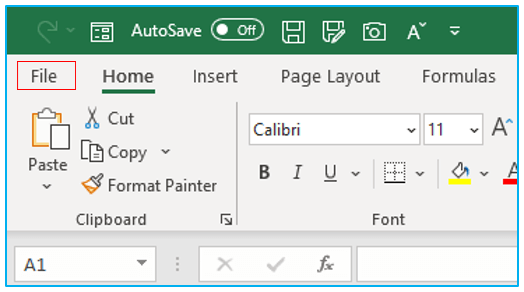
Step 2: Click on New and type Budget inside the search box, then press Enter to begin the search.
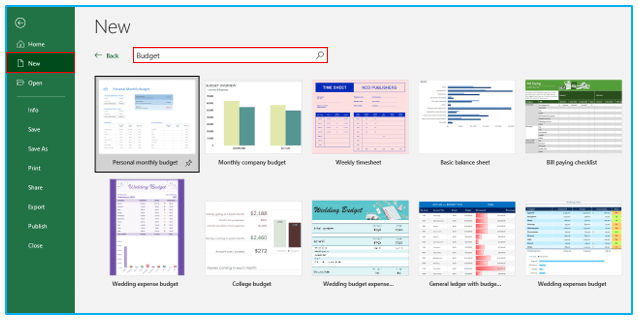
Step 3: When you find a suitable budget template, click on it to see it’s preview, and press the Create button.
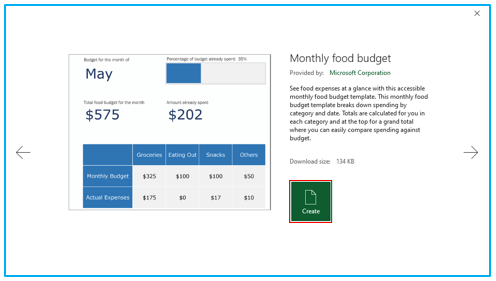
Step 4: The budget template will open in your worksheet. Now click on the cells to add your budget figures that are relevant to your income and expenses and create your own budget with it.
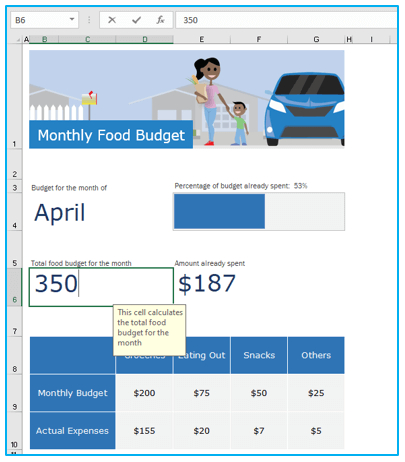
4. How to Create a Budget Manually? (Step-By-Step Guide)
Now we will learn how to create a budget from scratch without using any pre-made templates. We will be creating a monthly budget manually in your Excel worksheet.
Step 1: To create a monthly budget, we have to create the Income tab first. Create an income tab like this which will have the list of all your income sources. Here I have two income sources, the salary I get from my job and the money I make from outsourcing.
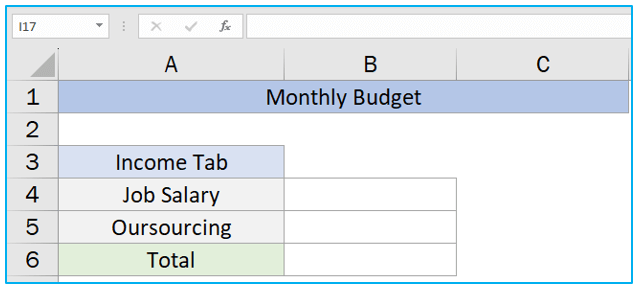
Step 2: To get the sum of the income figures, click on cell B6 and then use the SUM function.
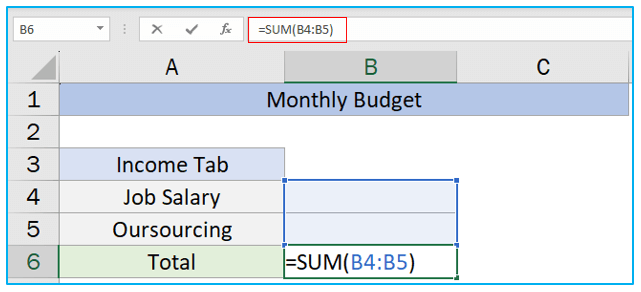
Step 3: Now we have to create the Expense tab. This Expense tab will include all the expense lists as well as Monthly Budget and Actual Expense columns.
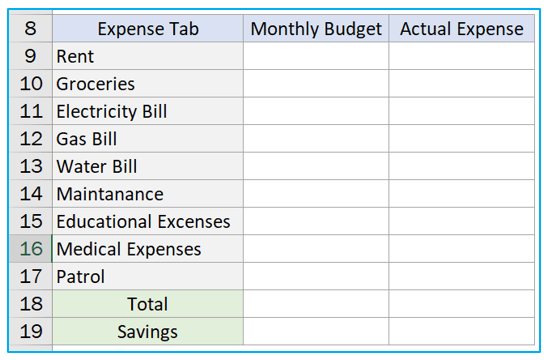
Step 4: Select cell B18 and use the SUM function to get the total monthly budget.
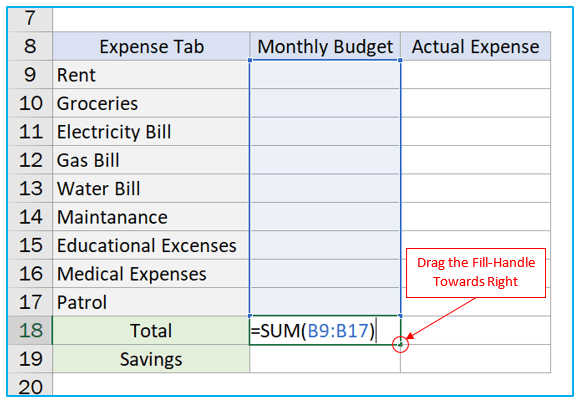
Step 5: Now drag the fill handle of B18 towards its right to C18. This will implement the SUM formula in C18 to give us the total of actual expense.
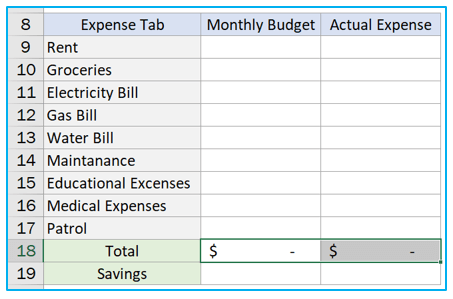
Step 6: Now select B19 and insert this simple subtraction formula in this cell. Make sure to create an absolute reference to the total income cell by using a Dollar Sign ($) with it. A dollar sign can be added to a cell reference by using the F4 key.
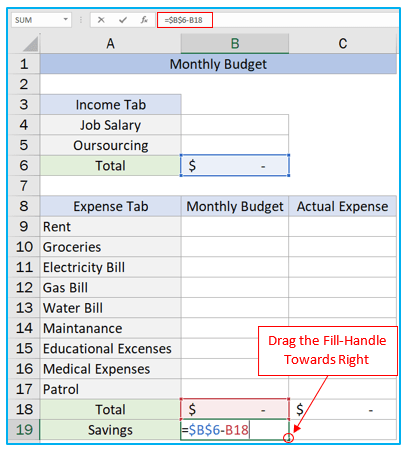
Step 7: Drag B19 to C19. This will apply the formula in C19 too, but the total income’s cell reference won’t change. This subtraction formula will subtract total budget and total expense from total income to give us the amount of money that should be saved and the actual amount that is saved.
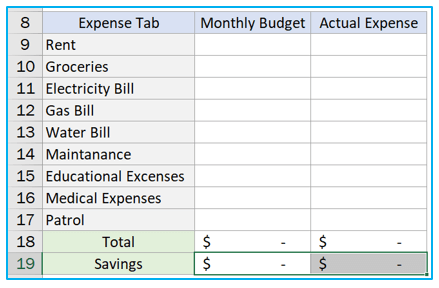
Step 8: The monthly budget table is ready. Now all you have to do is insert the amounts inside these cells.
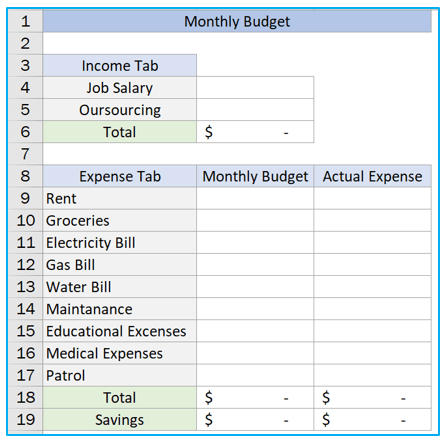
Step 9: When you insert your income and expenses in the corresponding cells, the formula will automatically count them and give you the total of income, expenses, and savings.
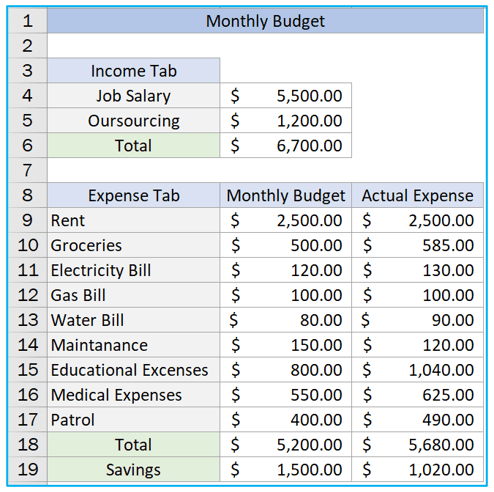
5. How to Graphically Represent a Budget in Excel?
Step 1: To graphically represent your expenses on a chart, select the range with expenses and the two titles named Monthly Budget and Actual Expense. Then go to the Insert tab and click on Recommended Charts option.
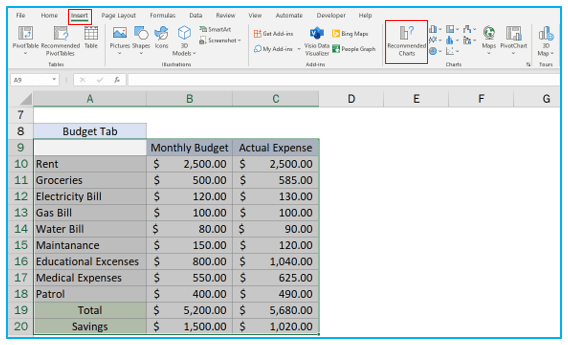
Step 2: From Recommended Charts tab, select a chart that represents your budget in the best possible way. After selecting a chart model, press OK.
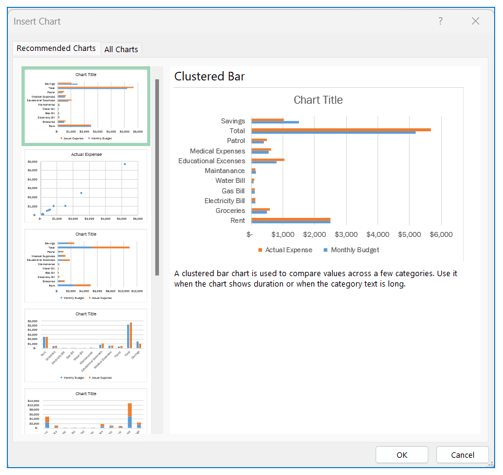
Step 3: A chart will be inserted inside your worksheet that will graphically represent your budget.
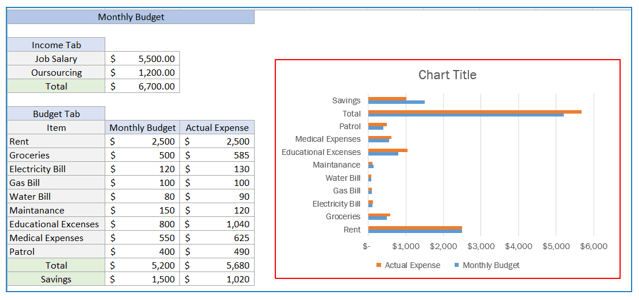
Application of Budget in Excel
- Expense Tracking: Monitor and categorize your expenses easily, allowing for a clear overview of where your money is being spent.
- Income Management: Track your income sources and amounts, helping you understand your cash flow and plan for future expenses.
- Budget Planning: Create detailed budgets for various categories such as groceries, utilities, and entertainment, aiding in better financial decision-making.
- Financial Analysis: Utilize built-in tools to analyze your spending patterns, identify trends, and make adjustments to improve your financial health.
- Goal Setting: Set savings goals or debt reduction targets, using Budget in Excel to track your progress and stay motivated towards achieving your objectives.
- Customization: Tailor the budget templates to suit your specific needs, whether for personal finances or business budgeting, ensuring flexibility and accuracy in your financial management.
For ready-to-use Dashboard Templates:
